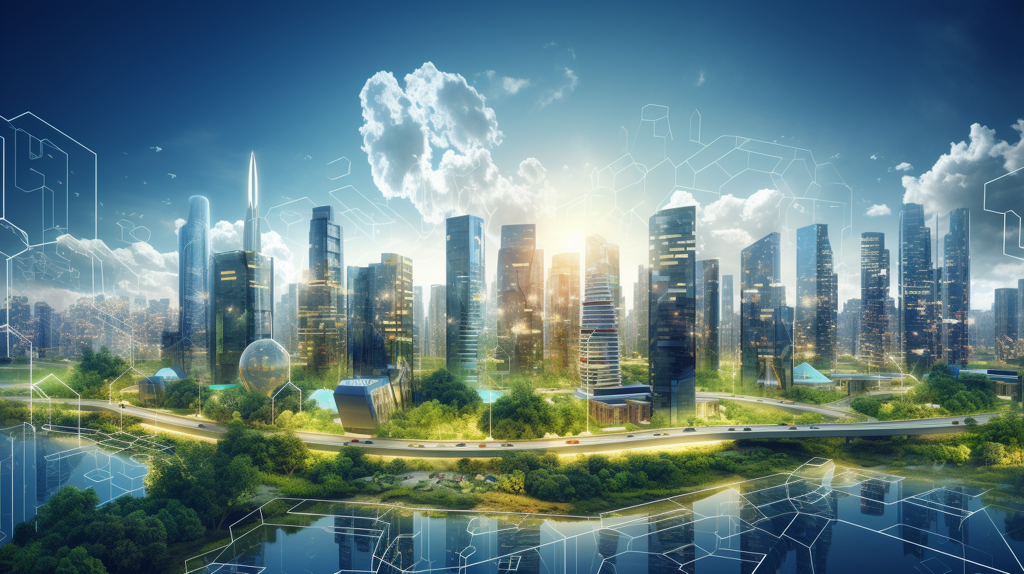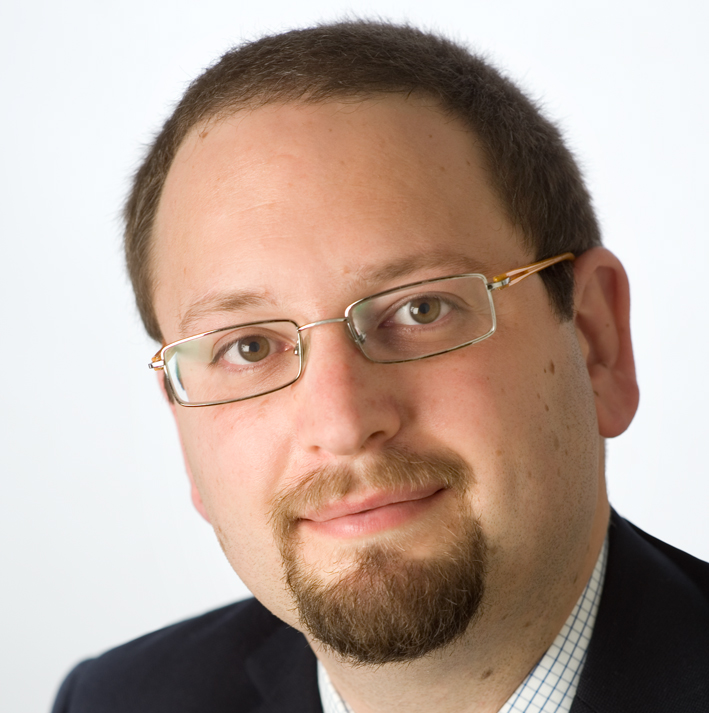What do future cities look like: digital, safe, and sustainable

A brain for buildings, a digital scale model of a city, or a robot assistant on the construction site. Digitalization is crucial in the built environment. Giorgio Agugiaro explains what your city will look like in the future.
As an assistant professor of 3D geographic information at TU Delft, Giorgio Agugiaro has focused on developing urban digital twins for years. To start with, the digital version of a building is fundamental to accelerating the energy transition, he says. "Through a digital version of a building, we can optimize energy and heat use, for example. But I like to look a step further. With a digital twin of an entire neighborhood or city, we can map the impact of sustainability measures such as the installation of solar panels at urban scale. For example, not all buildings are suitable for solar panels. But perhaps there is a shopping center nearby. If we put solar panels there, other buildings nearby may also use that energy. Ultimately, the goal is to arrive at an optimal result together," Agugiaro says.
Digital twins are a good example of digitalization in construction. For 4TU.Built Environment, a collaboration between the architecture faculties of the four technical universities in the Netherlands, digitalization is one of the critical focus areas. A special team was set up to conduct further research on this. The Domain Acceleration Team (DAT) 'Digitalization' initiates new research and is also the point of contact for people from the industry, the top sectors, and the government. Digital twins are an important topic for the team, as are mixed reality, artificial intelligence (AI), robotization, and automation. Altogether these topics represent the four main objectives that have been drawn up in the DAT.
Digital and physical in one
Whereas digital twins usually help with planning or renovation, mixed reality focuses mainly on executive construction tasks. "You regularly hear that after road works, streets or neighborhoods are without power or internet for a long time because the cables in the ground have been broken by mistake. We can prevent that with mixed reality. We can make the pipes and cables in the ground visible above the ground (a combination between virtual reality and the real world, ed.)," he explains. AI can also further optimize construction. "The algorithms can analyze data from sensors, for example, facilitating optimal use of a building. In addition, it is also a good way to predict maintenance. If a pipe in the ground needs to be replaced, there is a good chance that other pipes in the area may have to be changed soon as well. With smart algorithms, we can predict this and set up maintenance in the best possible way," Agugiaro said.
Also read: https://innovationorigins.com/nl/gebouwen-verduurzamen-geef-ze-een-stel-hersens/
Going into depth
Agugiaro says collaboration is indispensable for further development of technologies and their implementation. This year, for the third year in a row, the DAT Digitization is organizing a meeting between the four technical universities and 14 universities of applied sciences in the Netherlands. "Collaboration with colleagues is very enriching. When researching, you often go very in-depth on a specific topic. That's important because that's how you gather a lot of knowledge. Everyone has their expertise. But by looking for cooperation, you also keep looking in the breadth, and you can connect the different subjects."
When is a city truly smart?
All the different aspects and research come together in the future of smart cities. Agugiaro: "A smart city is (also) made of smart buildings. It is a long chain of objects and devices that ideally work together. However, how do we integrate all the devices and components, how do we collect data, and how can we learn from it? This is the challenge!" According to the assistant professor, a city is only truly smart if it is optimally designed for its inhabitants as well as contributing to a more sustainable world. "For example, a smart city can use sensors and data analysis to warn residents of possible flooding and contribute to the optimal use of sustainably generated energy. This is not only about the current system but also about calculating various future scenarios."
Reliable data
To apply the various technologies, reliable data is the starting point. That is also an immediate stumbling block. "Collecting complete and reliable data is not easy. Who is responsible for which data, and how is privacy guaranteed? I don't have complete answers to all these questions yet, either. It is important to look for solutions and structures together," he states. According to him, the government is also crucial in creating rules. "It's not just about the technology; it's also about the regulations around it. How can we use everything in the best possible way? The pragmatic view of companies is also important to ultimately arrive at workable models."
Digitalization in the built environment will make our lives easier and more sustainable. Agugiaro is convinced of that."Imagine if the fire department had a digital floor plan available for all houses. Then firefighters would never have to search again and could save more lives and prevent more severe damage more often. In this way, there are still endless possibilities to use data for a safer and more liveable city."
